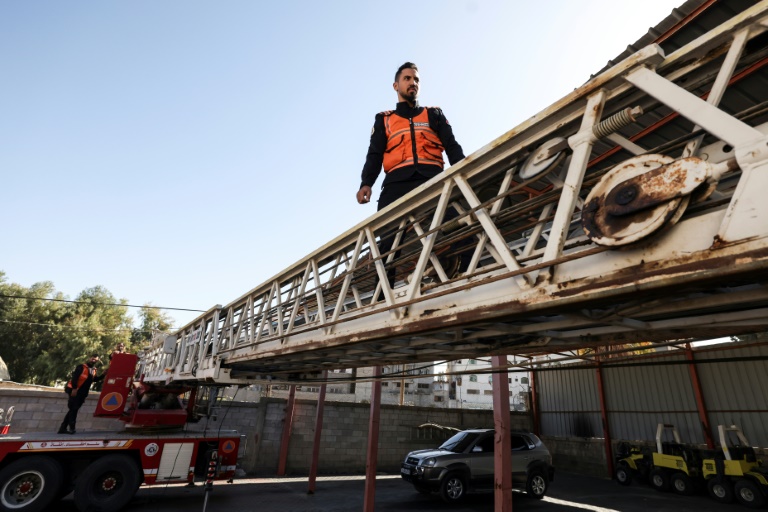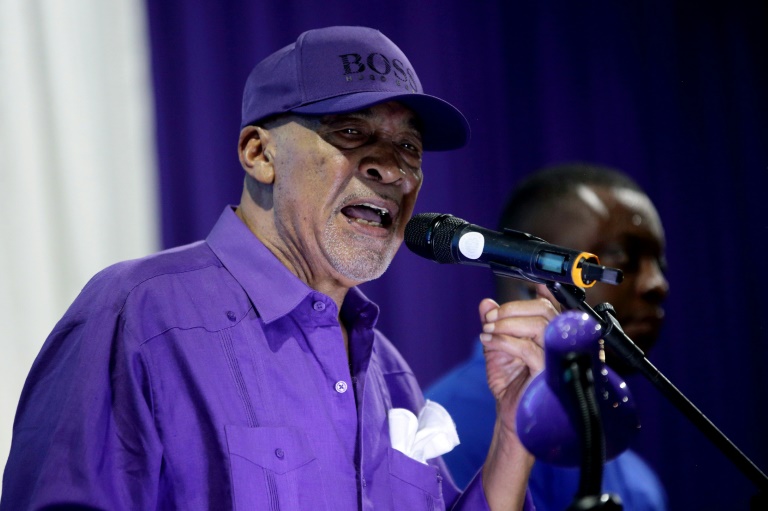AFP
Standing on his street in Gaza, Alaa Habboub looked on in horror as flames engulfed his neighbours’ home and screams rang out from the inferno that would claim 21 lives.
The disaster last month, in a three-storey residence packed with containers of petrol, may have been less deadly if the Gaza Strip had a better equipped fire service, said the 21-year-old.
The densely crowded Palestinian enclave blockaded by Israel has a shortage of fire and rescue gear, and most of its trucks are decades old, its emergency services say.
“If we had equipment and cranes, the fire would have been brought under control,” said Habboub, recalling the fire that raged in Jabalia, northern Gaza on November 17.
Since Israel imposed its Gaza blockade in 2007, when Islamist armed group Hamas took power there, it has heavily restricted the import of “dual-use” goods — anything with a potential military purpose.
Israel says this is necessary to contain Gaza-based militants committed to attacking Israel.
While cars can enter Gaza from Israel, fire trucks and cranes cannot, according to Gisha, an Israeli human rights group that examines the issue of dual-use materials.
Israeli officials confirmed to AFP that fire trucks are considered “dual-use” items, adding that one truck donated by Qatar entered Gaza in 2019 through Egypt.
The Palestinian enclave currently has around 20 trucks in working order, according to its civil defence unit.
“We have a shortage of all equipment,” said the head of Gaza’s civil defence unit, Zuhair Shaheen. “Our best model of vehicle was made in 1994. Everything is old and worn out.”
The lack of equipment “increases the number of casualties and damage to citizens’ property”, he told AFP.
Apart from Qatar’s donation, all the vehicles were imported before the Israeli blockade began.
But just one of those is equipped with a working crane capable of reaching the rooftops in Gaza, which now has more tall buildings for a growing population estimated at 2.3 million people.
Shaheen argued it is unjust for Israel to categorise essential firefighting material as dual-use.
“I can assure you, there is no military purpose,” he said. “We are a humanitarian organisation that protects and saves lives.”
Israel has fought four wars with Hamas since 2007 and, with a lack of specialist equipment, rescuers have struggled to save people from bombed-out buildings.
Mahmoud Basal, from the civil defence unit, said during the May 2021 war the rescuers lost vital time after multiple airstrikes in downtown Gaza City.
“Unfortunately, we pulled martyrs out from under the rubble who were supposed to have been pulled out wounded,” he said.
He added this was “due to the lack of equipment to detect (people) under the rubble and no capacity”.
The push for more rescue tools has been supported by Haaretz, Israel’s left-wing daily newspaper.
In an editorial days after the Jabalia fire, the paper said officials in Gaza had “warned in the past about the poor condition of their vehicles and equipment”.
“These services urgently need oxygen, ladders, lock breakers and firefighter suits,” Haaretz said.
“Israel should send this equipment,” it added, insisting the government “can’t ignore its own responsibility for the lives of Gaza’s residents”.
There is no official contact between Israel and Hamas, meaning all coordination on humanitarian issues is done through intermediaries.
The Palestinian Authority, based in the occupied West Bank, as well as Egypt and the United Nations, serve as key players.
Shaheen said Gaza’s rescue teams work “miracles through their own efforts and with meagre resources”.
Palestinian farmer Abdul Karim al-Dabbah, 67, said he has repeatedly seen Israeli emergency response aircraft drop water on fires that break out on Israeli territory, near the Gaza border.
“Why can’t they help our civil defence service?” he asked.

AFP

AFP

AFP







